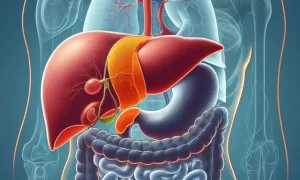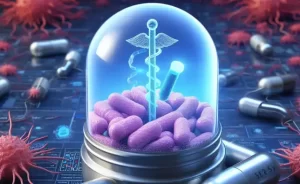Eli Lilly announces a new generation of KRAS inhibitor LY3537982
- Normal Liver Cells Found to Promote Cancer Metastasis to the Liver
- Nearly 80% Complete Remission: Breakthrough in ADC Anti-Tumor Treatment
- Vaccination Against Common Diseases May Prevent Dementia!
- New Alzheimer’s Disease (AD) Diagnosis and Staging Criteria
- Breakthrough in Alzheimer’s Disease: New Nasal Spray Halts Cognitive Decline by Targeting Toxic Protein
- Can the Tap Water at the Paris Olympics be Drunk Directly?
Eli Lilly announces a new generation of KRAS inhibitor LY3537982
- Should China be held legally responsible for the US’s $18 trillion COVID losses?
- CT Radiation Exposure Linked to Blood Cancer in Children and Adolescents
- Can people with high blood pressure eat peanuts?
- What is the difference between dopamine and dobutamine?
- What is the difference between Atorvastatin and Rosuvastatin?
- How long can the patient live after heart stent surgery?
Eli Lilly announces a new generation of KRAS inhibitor LY3537982, which is more than 10 times more active than AMG510.
RAS is the first oncogene identified in human tumors, but it has always been regarded as a “non-drugable” target. Epidemiology shows that KRAS mutations account for approximately 13% in NSCLC, approximately 3%-5% in colorectal cancer, and approximately 1%-2% in other solid tumors.
The fastest-growing KRAS-G12C irreversible inhibitor Sotorasib (AMG510) has submitted a marketing application at the end of last year and is expected to become the first KRAS targeted drug approved for marketing.
In 2019, Eli Lilly’s first KRAS G12C inhibitor, LY3499446, started clinical research, and the latter was terminated due to safety issues, and was lagging behind on the KRAS track.
Recently, Eli Lilly has made a strong comeback and announced the preclinical activity data of its new generation of KRAS G12C inhibitor LY3537982 at the AACR2021 annual meeting, which is expected to win back.
According to published data, LY3537982 is also a covalent KRAS-G12C inhibitor. It exhibits high target inhibitory activity in KRAS G12C mutant H23 and H358 lung cancer cell lines, with IC50 of 1.04 nM and 1.16 nM, respectively. In KRAS G12C mutant H358 cells, the inhibitory activity (IC50) of LY3537982 was at least 10 times higher than that of Sotorasib (AMG 510) and Adagrasib.

In the KRAS-G12C mutant (PDX) model, LY3537982 showed a significant tumor growth inhibitory effect at 3-30 mg/kg QD or BID, and even made tumors completely regressed.

In addition, LY3537982 showed a target occupancy rate of >90%, while the target occupancy rate of Sotorasib and Adagrasib was less than 70%.

However, whether the strong target occupancy rate of LY3537982 can promote the further improvement of clinical activity remains to be confirmed by clinical studies.
Currently, the KRAS-G12C inhibitors in the development stage include Yifang Biologics D-1553 (Phase I/II), Novartis’ JDQ443 (Phase I/II), Genetech’s RG6330 (Phase I), Johnson & Johnson’s ARS-3248 ( Phase I), BPI-421286 (IND) of Betta Pharmaceuticals, GH35 (IND) of Qinhao Pharmaceutical, and adagrasib (Phase III) of Mirati Therapeutics.
Eli Lilly’s strong return has added waves to the field of KRAS inhibitors. The former may not win the final victory, and the latter is expected to become the king. The field of KRAS inhibitors is full of thorns, opportunities and hopes, and patients will ultimately benefit from it.
Eli Lilly announces a new generation of KRAS inhibitor LY3537982
(source:internet, reference only)
Disclaimer of medicaltrend.org



